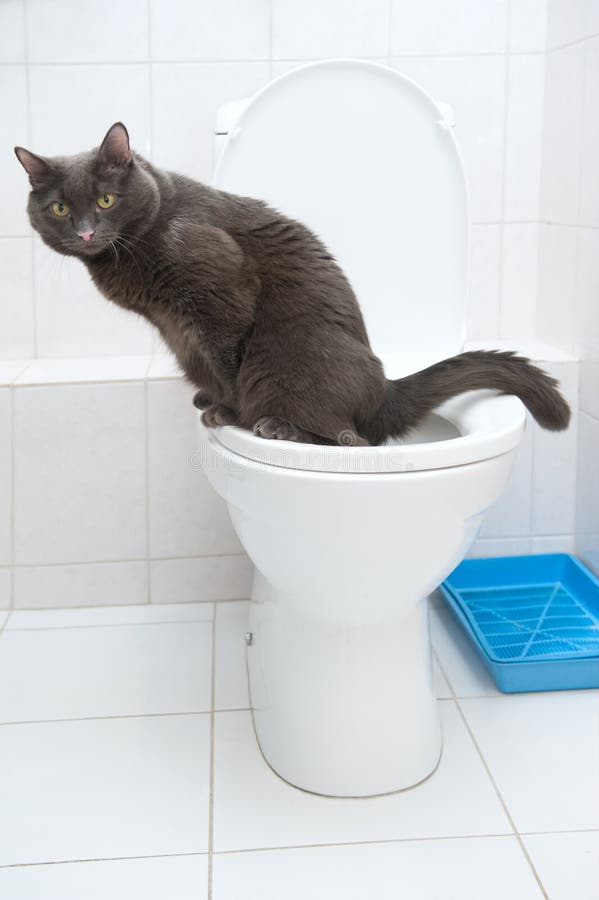Why Flushing Cat Poop Down Your Toilet Is Bad - Suggestions for Correct Handling
Why Flushing Cat Poop Down Your Toilet Is Bad - Suggestions for Correct Handling
Blog Article
How do you actually feel when it comes to How to Dispose of Cat Poop and Litter Without Plastic Bags?

Intro
As feline proprietors, it's important to bear in mind how we get rid of our feline close friends' waste. While it may seem hassle-free to purge cat poop down the bathroom, this practice can have damaging consequences for both the setting and human health and wellness.
Environmental Impact
Purging pet cat poop presents damaging virus and bloodsuckers right into the supply of water, presenting a significant threat to water communities. These impurities can adversely affect aquatic life and concession water high quality.
Wellness Risks
Along with environmental concerns, purging pet cat waste can likewise posture wellness dangers to humans. Feline feces may have Toxoplasma gondii, a bloodsucker that can cause toxoplasmosis-- a possibly extreme disease, particularly for expecting females and people with weakened body immune systems.
Alternatives to Flushing
Thankfully, there are more secure and extra responsible means to dispose of feline poop. Take into consideration the following alternatives:
1. Scoop and Dispose in Trash
The most usual method of throwing away pet cat poop is to scoop it into an eco-friendly bag and toss it in the garbage. Be sure to make use of a specialized litter inside story and deal with the waste promptly.
2. Use Biodegradable Litter
Select biodegradable feline litter made from products such as corn or wheat. These litters are eco-friendly and can be safely taken care of in the garbage.
3. Bury in the Yard
If you have a backyard, take into consideration hiding feline waste in a designated area away from veggie yards and water resources. Make sure to dig deep adequate to stop contamination of groundwater.
4. Mount a Pet Waste Disposal System
Purchase an animal waste disposal system especially developed for cat waste. These systems utilize enzymes to break down the waste, minimizing odor and environmental influence.
Final thought
Liable family pet possession expands beyond offering food and sanctuary-- it likewise involves appropriate waste administration. By avoiding flushing feline poop down the commode and opting for alternative disposal approaches, we can decrease our ecological impact and protect human health.
Why Can’t I Flush Cat Poop?
It Spreads a Parasite
Cats are frequently infected with a parasite called toxoplasma gondii. The parasite causes an infection called toxoplasmosis. It is usually harmless to cats. The parasite only uses cat poop as a host for its eggs. Otherwise, the cat’s immune system usually keeps the infection at low enough levels to maintain its own health. But it does not stop the develop of eggs. These eggs are tiny and surprisingly tough. They may survive for a year before they begin to grow. But that’s the problem.
Our wastewater system is not designed to deal with toxoplasmosis eggs. Instead, most eggs will flush from your toilet into sewers and wastewater management plants. After the sewage is treated for many other harmful things in it, it is typically released into local rivers, lakes, or oceans. Here, the toxoplasmosis eggs can find new hosts, including starfish, crabs, otters, and many other wildlife. For many, this is a significant risk to their health. Toxoplasmosis can also end up infecting water sources that are important for agriculture, which means our deer, pigs, and sheep can get infected too.
Is There Risk to Humans?
There can be a risk to human life from flushing cat poop down the toilet. If you do so, the parasites from your cat’s poop can end up in shellfish, game animals, or livestock. If this meat is then served raw or undercooked, the people who eat it can get sick.
In fact, according to the CDC, 40 million people in the United States are infected with toxoplasma gondii. They get it from exposure to infected seafood, or from some kind of cat poop contamination, like drinking from a stream that is contaminated or touching anything that has come into contact with cat poop. That includes just cleaning a cat litter box.
Most people who get infected with these parasites will not develop any symptoms. However, for pregnant women or for those with compromised immune systems, the parasite can cause severe health problems.
How to Handle Cat Poop
The best way to handle cat poop is actually to clean the box more often. The eggs that the parasite sheds will not become active until one to five days after the cat poops. That means that if you clean daily, you’re much less likely to come into direct contact with infectious eggs.
That said, always dispose of cat poop in the garbage and not down the toilet. Wash your hands before and after you clean the litter box, and bring the bag of poop right outside to your garbage bins.
https://trenchlesssolutionsusa.com/why-cant-i-flush-cat-poop/
I was shown that report on Don’t flush cat feces down the toilet from someone on our other web blog. Enjoyed our piece? Please share it. Let another person find it. I thank you for reading our article about Don’t flush cat feces down the toilet.
Book A Service Call Report this page